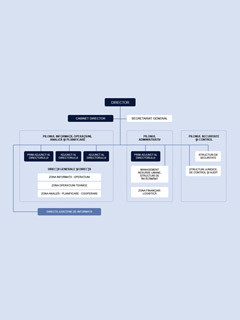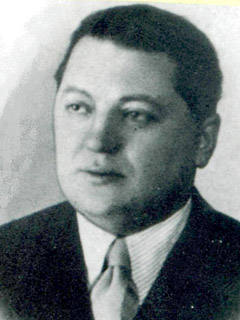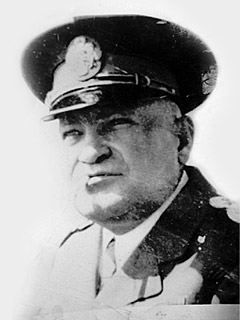- April 2020
-
The Supreme Council of National Defense approves the National Anti-Terrorist
Action
Center (CNAA) Organization and Operation Regulation
- September 1, 2019
-
Reorganization of SRI into a regional structure
- March 1 2016
-
General Direction for classified correspondence and objectives has been awarded the
Combat Flag by Presidential Decree no. 269 of 03.01.2016 (published in the Official
Gazette no. 167 of 04/03/2016).
- November 28 2014
-
The Combat Flag of the Antiterrorist Brigade was decorated with the Knight of the
National Order of "Faithful Service", for Military Flags in peacetime through
Presidential Decree no. 683 of 28/11/2014.
- March 2011
-
The new 2011 - 2015 Strategic Vision “SRI in the Information Age” came into
force.
- December 2010
-
 The new SRI Internal Regulations and a new organizational
structure, currently in use, were sanctionated.
The new SRI Internal Regulations and a new organizational
structure, currently in use, were sanctionated.
- March 2010
-
The Supreme Council of National Defense designates SRI as the national authority
responsible for the coordination of air marshals on board aircraft and for the
exchange of information necessary for their activities.
- July 2008
-
The new organizational structure of the SRI approved by the Supreme Council for
National Defense on March 25, 2008, was implemented.
- March 2008
-
The Supreme Council for National Defense sanctioned the new Structure and Internal
Regulations of SRI.
- December 2004
-
The Romanian Parliament adopts Law 535 on Preventing and Combating Terrorism,
amended
and supplemented
- April 2004
-
The Supreme Council of National Defense approves the National System for Terrorist
Alert (SNAT)
- April 2002
-
The Supreme Council of National Defense approves the National Strategy on
Preventing
and Countering Terrorism
- November 2001
-
The Supreme Council for National Defense sanctioned the new SRI Internal Regulations.
- October 2001
-
The Supreme Council of National Defense designates SRI as the national authority for
preventing and combating terrorism
- February 24, 1992
-
The Law no. 14 on the Organization and Functioning of the Romanian Intelligence
Service was passed. The law defines the main tasks and responsibilities of the
institution.
- July 29, 1991
-
Law no. 51 on the National Security of Romania was passed. The law defines threats to
national security. The Romanian Intelligence Service, Foreign Intelligence Service,
Guard and Protection Service as well as the specialized structures within the
Defense Ministry, Interior Ministry, and Justice Ministry are the bodies with
competences in national security. National security activities are coordinated by
the Supreme Council for National Defense.
- July 1, 1990
-
The Antiterrorist Brigade is established as a central structure of the Romanian
Intelligence Service, authorized to organize and execute, under a unified framework,
activities for detecting, preventing, neutralizing, and countering terrorist actions
on the territory of Romania
- March 26, 1990
-
By Decree no. 181 the Romanian Intelligence Service (SRI) was set up as state
institution specialized in the field of intelligence gathering on national security.
- December 30, 1989
-
By Decision of the Council of the National Salvation Front, all the Securitate bodies
were disbanded.
- June 1, 1974
-
The first specialized unit for combating terrorism on national territory is
established, comprising information-operational structures, airport security,
protection of TAROM aircraft and of diplomatic missions, as well as
counter-terrorism intervention forces
- April 9, 1972
-
By Decree no. 130, the State Security Council became once again part of the Ministry
of Interior. The State Security Department was reorganized into six main
directorates (domestic intelligence, economic counter-intelligence,
counter-espionage, military counter-intelligence, security and protection, and
criminal prosecution).
- April 4, 1968
-
The State Security Council separated from the Ministry of Interior and functioned as
a central state body.
- July 22, 1967
-
By Decree no. 170, the State Security Department started its activity within the
Ministry of Interior. The Department was headed by a State Security Council run by a
President having the rank of Minister.
- 1960-1965
-
The Securitate personnel was purged and many officers imposed by Moscow were removed.
- July 11, 1956
-
By Decision of the Council of Ministers, the Security Department and the Interior
Department were set up.
- September 20, 1952
-
The General Directorate of State Security was no longer part of the Ministry of
Interior and became the Ministry of State Security. The latter became once again
part of the Ministry of Interior in September 1953.
- March 30, 1951
-
The General Directorate for the Security of the People became the General Directorate
of State Security, also including a Foreign Intelligence Directorate.
- February 7, 1949
-
The Gendarmerie was dissolved and replaced by Securitate troops.
- January 23, 1949
-
By Decree no. 25 the General Directorate for Militia was set up within the Ministry
of Interior, which replaced the General Safety Directorate.
- August 30, 1948
-
By Decree no. 221 the General Directorate for People's Security was set up within the
Ministry of Interior. The Directorate was made up of 10 central directorates and 12
regional ones. Until 1958, Soviet counselors had a crucial role in setting the
coordinates of the new institution.
- March 1947
-
The Intelligence Service of the Army was set up; it was subordinated to the General
Staff.
- April 27, 1945
-
By Ministerial Decision no. 79 the Intelligence Service was subordinated to the
Presidency of the Council of Ministers; its name was changed into the Special
Intelligence Service.
- September 15, 1944
-
By Decree Law no. 1695, the Special Intelligence Service was subordinated to the
Ministry of War; its name was changed into the Intelligence Service.
- November 21, 1942
-
Law no. 687 on Countering the Information Leakage and Sabotage was passed.
- November 12, 1940
-
 The Decree
– Law no. 3818 regarding the organization of the Special Intelligence Service (the
former Secret Service) was passed. The Service conducted its activity under the
coordination of the Presidency of the Council of Ministers. Eugen Cristescu was
appointed head of the Special Intelligence Service. He was former director of the
State Administration, Personnel and Mobilization within the Ministry of Interior.
The Decree
– Law no. 3818 regarding the organization of the Special Intelligence Service (the
former Secret Service) was passed. The Service conducted its activity under the
coordination of the Presidency of the Council of Ministers. Eugen Cristescu was
appointed head of the Special Intelligence Service. He was former director of the
State Administration, Personnel and Mobilization within the Ministry of Interior.
- April 1939
-
Statistic military bureaus were set up within the 2nd Section of the General Staff in
Iasi, Bucharest, and Cluj. The bureaus had counter-intelligence
responsibilities.
- January 1, 1937
-
The Code of Military Justice came into force. The Code stipulated harsher punishments
for treason and espionage, even death penalty for high treason.
- 1934
-
The first official organizational structure of the Secret Service was sanctioned. It
included a Foreign Intelligence section, a Counter-Intelligence section, a Legal
Bureau and a Technical Bureau. The same year marks Moruzov’s intention to take the
Secret Service out of the Army structure and place it under the authority of the
Royal Palace. This will occur de facto in 1938, but not de jure.
- 1930
-
The Secret Service had close relations with English and French intelligence
structures for over a decade, while during the World War II, it cooperated mainly
with the German and Italian military intelligence services. Once the Communist
regime came to power on March 6, 1945, the intelligence cooperation focused on the
Soviets. That changed in 1975 when the policy of the Communist Party shifted.
- June 10, 1930
-
A new Law on Espionage in Times of Peace was passed. The law stipulated harsher
punishments.
- May 1, 1925
-
Mihai Moruzov became an employee of the Intelligence Gathering Bureau within the 2nd
Section of the General Staff. After years of efforts, Moruzov managed to persuade
the leadership of the General Staff to set up a Secret Service employing civilians
“with a view to gathering, checking and complementing information of interest to the
army”.
- March 1917
-
 Mihai
Moruzov set up the Safety Bureau of the Danube Delta. The Bureau employed personnel
from the General Safety Directorate working for the General Staff. This embryo of a
civil intelligence structure working for the army was disbanded in 1920.
Mihai
Moruzov set up the Safety Bureau of the Danube Delta. The Bureau employed personnel
from the General Safety Directorate working for the General Staff. This embryo of a
civil intelligence structure working for the army was disbanded in 1920.
- January 13, 1913
-
 The Law on Espionage
in Times of Peace was passed. It stipulated imprisonment from 2 to 15 years for
those found guilty of treason and espionage.
The Law on Espionage
in Times of Peace was passed. It stipulated imprisonment from 2 to 15 years for
those found guilty of treason and espionage.
- April 19, 1892
-
 The General Safety
Bureau was set up within the Ministry of the Interior. In March 1908, the Bureau
became the Police and General Safety Directorate. The intelligence gathering
responsibilities were shared with the Prefect’s Office of the Capital City Police
and General Inspectorate of the Gendarmerie.
The General Safety
Bureau was set up within the Ministry of the Interior. In March 1908, the Bureau
became the Police and General Safety Directorate. The intelligence gathering
responsibilities were shared with the Prefect’s Office of the Capital City Police
and General Inspectorate of the Gendarmerie.
- 1865
-
 After the French model, the
General Staff set up a 2nd Section whose mission was to gather, analyze, and
synthesize military information.
After the French model, the
General Staff set up a 2nd Section whose mission was to gather, analyze, and
synthesize military information.


 The new SRI Internal Regulations and a new organizational
structure, currently in use, were sanctionated.
The new SRI Internal Regulations and a new organizational
structure, currently in use, were sanctionated.
 The Decree
– Law no. 3818 regarding the organization of the Special Intelligence Service (the
former Secret Service) was passed. The Service conducted its activity under the
coordination of the Presidency of the Council of Ministers. Eugen Cristescu was
appointed head of the Special Intelligence Service. He was former director of the
State Administration, Personnel and Mobilization within the Ministry of Interior.
The Decree
– Law no. 3818 regarding the organization of the Special Intelligence Service (the
former Secret Service) was passed. The Service conducted its activity under the
coordination of the Presidency of the Council of Ministers. Eugen Cristescu was
appointed head of the Special Intelligence Service. He was former director of the
State Administration, Personnel and Mobilization within the Ministry of Interior.
 Mihai
Moruzov set up the Safety Bureau of the Danube Delta. The Bureau employed personnel
from the General Safety Directorate working for the General Staff. This embryo of a
civil intelligence structure working for the army was disbanded in 1920.
Mihai
Moruzov set up the Safety Bureau of the Danube Delta. The Bureau employed personnel
from the General Safety Directorate working for the General Staff. This embryo of a
civil intelligence structure working for the army was disbanded in 1920. The Law on Espionage
in Times of Peace was passed. It stipulated imprisonment from 2 to 15 years for
those found guilty of treason and espionage.
The Law on Espionage
in Times of Peace was passed. It stipulated imprisonment from 2 to 15 years for
those found guilty of treason and espionage. The General Safety
Bureau was set up within the Ministry of the Interior. In March 1908, the Bureau
became the Police and General Safety Directorate. The intelligence gathering
responsibilities were shared with the Prefect’s Office of the Capital City Police
and General Inspectorate of the Gendarmerie.
The General Safety
Bureau was set up within the Ministry of the Interior. In March 1908, the Bureau
became the Police and General Safety Directorate. The intelligence gathering
responsibilities were shared with the Prefect’s Office of the Capital City Police
and General Inspectorate of the Gendarmerie. After the French model, the
General Staff set up a 2nd Section whose mission was to gather, analyze, and
synthesize military information.
After the French model, the
General Staff set up a 2nd Section whose mission was to gather, analyze, and
synthesize military information.
Social media